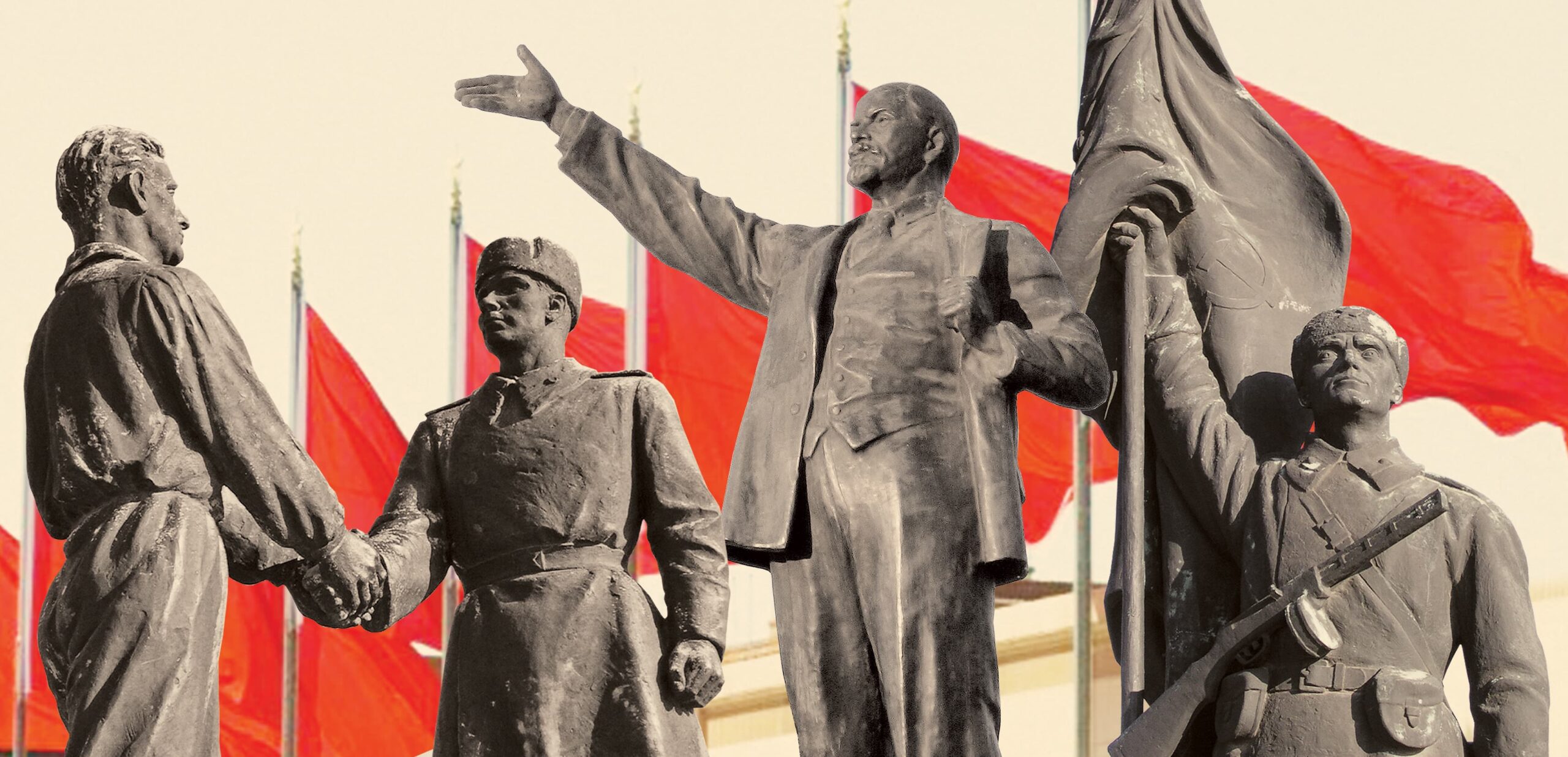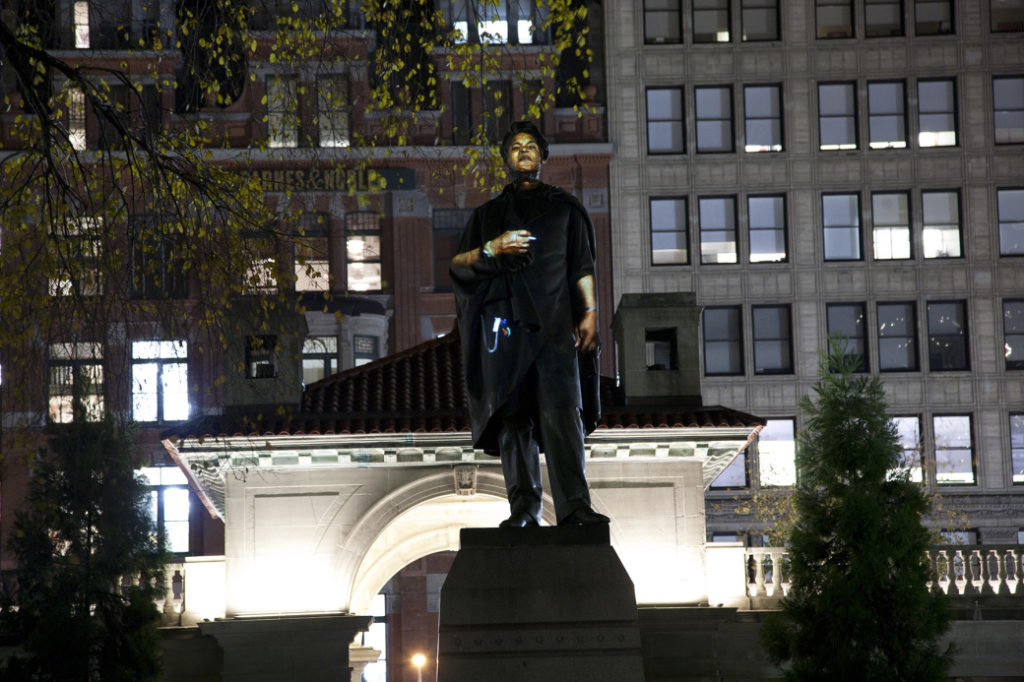On Monuments
May 16, 2018 / 0 Comments
It has been less than a year since violent hatred erupted on August 12, 2017 at a white nationalist rally in Charlottesville, Virginia, fueled by the planned removal of a bronze statue of Robert E. Lee from a public park. This horrific event has become the locus for the fiery debate about the fate of Confederate monuments, one that reignited some two years earlier when a self-identified white supremacist murdered nine black parishioners in a church in Charleston, South Carolina, triggering a wave of fallen Confederate statues throughout the American South. Today, similar disputes embroil other kinds of controversial public statues and monuments (nationalist, colonialist, racist, misogynist), eliciting a whole host of responses about how to represent complex, often problematic histories, and what to do with the physical markers of those histories when they tarnish the democratic principles the present upholds.
Across the United States and elsewhere, cities have de-installed such statues and continue to do so, with many placed in warehouses or relocated to other sites. Some have been temporarily cloaked in tarps as they await their final outcome, while others are protected under historic preservation laws. The diversity of such actions suggests that there is no one solution, nor should there be, as each geo-political site has its own set of social conflicts and spatial conditions.
This was certainly true of Eastern Europe at the fall of the Berlin Wall in 1989, when statues of communist leaders and other Soviet symbols were either toppled or razed throughout the former Eastern bloc. Although Western media coverage imprinted a unified image of the mass elimination of Soviet icons from the newly democratic public sphere, their removal was actually quite varied. In Hungary, for instance, Soviet statues were moved to the outskirts of Budapest and reinstalled as what is now named The Memento Park Museum, an outdoor reliquary of some 40 public monuments from the former communist period. As I wrote elsewhere after experiencing the park in the mid-1990s, the museum’s purpose is not to celebrate the icons of this ideology but rather to serve as an educative environment to reflect on the socialist past. The efficacy of these memorial museums in Eastern Europe has been challenged by Hungarian art historian Edit Andras, who claims that they were created “well before their societies could have come to terms with their recent past.” “All in all, elements of the socialist past were collected and put aside in quarantines,” she states. “The ready-made, pre-packaged public spaces for remembering the past excluded from the public.”(Note 1)

The problems of access and invisibility identified here cloud collective memory of the realities of totalitarian public space, a reality that has taken on a new guise in present-day Hungary under Prime Minister Viktor Orban’s right-wing extremism. However, the politics of memory is quite different in the current context of the United States, where the durational aspect of Confederate statues and similar kinds of public monuments elicit an endless return to a traumatic history, while continuing to celebrate legacies of oppression.
Also revealed within the current debates are the varied definitions and functions of these historical symbols as monuments, memorials, statues, sculptures, or public art versus instruments of propaganda as in the East European context, although one might draw parallels between their political functions and the “psycho-social” relationships they elicit. Do they commemorate, celebrate or memorialize? Or if engaged in the aesthetics of visual representation, are they works of art? With various exceptions, most of these monuments adhere to the formal and ideological conventions of Neoclassicism: colossal, figurative, equestrian, male, they embody a unified, idealized vision of the past, one rendered symbolically timeless and materially immovable. But now both the reality and illusion of their permanence has been shattered.
During the recent panel “Down with Monuments? On the Making and Unmaking of Public Memory” at the School of the Art Institute of Chicago (SAIC) last fall, art historian W.J.T. Mitchell spoke about the contradictory nature of monuments and their corporeal relationship to the present. “Monuments want something that they ultimately can never have, which is immortality,” he argued. “The fundamental paradox built into monuments [is that] they keep the past alive, at the same time that they show that the past is past, the past is dead. In the case of the Confederate memorials, they have been brought back to life into the world of discussion and controversy.” (Note 2)
The tension between these kinds of bodily metaphors and the inherent inertness of monuments as physical objects is what drives current debates about whether or not these historic markers should be destroyed. It is also at the heart of the public art practice of Krzysztof Wodiczko, whose projections animate public sculptures to give voice to the living and to reclaim the public spaces of the city. For Wodiczko, the question of who or what to commemorate is as much about making visible those left out of mainstream narratives of history as it is about erasing the traumas of the past. “The history of the victors must be confronted and interrupted by the memory of the nameless or the tradition of the vanquished,” he writes. “Each time the experience of a stranger is shared and understood, the city revives and returns to its conscious life as a democratic hope to us all.” (Note 3)

Thus the artist’s subjects are often the homeless and immigrants whose visages are superimposed onto existing public statues, transforming the unsung into momentary heroes. For his project Abraham Lincoln: War Veteran Projection (2012), Wodiczko worked with American war veterans to create a series of video interviews that were projected onto a statue of Abraham Lincoln in New York’s Union Square Park. The veterans’ stories of loss and personal conflict appeared to emanate from Lincoln himself, a figure synonymous with the struggle for freedom and a symbol of the very issues at the core of today’s debates. At the same time, each veteran regardless of race, gender or ability embodied the sculpture with his or her own authority and subjectivity, repossessing this iconic, static form to engage with the park’s itinerant public.
The recent restaging of Wodiczko’s 1988 public projection at the Hirschhorn Museum in Washington, DC, as part of the exhibition “Brand New: Art and Commodity in the 1980s” (February 14-May 13, 2018) was a reminder of the power of images to unleash in the artist’s words “the nightmares of the past” and simultaneously speak to the horrors of the present. The work, depicting two disembodied hands, one holding a gun, the other a lit candle, positioned on either side of a set of microphones, was initially conceived in response to the political rhetoric around the death penalty and reproductive rights debated during the 1988 presidential campaign. However, the artist and the museum postponed the restaging planned for mid-February out of respect to those killed during the Parkland school shootings that occurred the day before on February 14. (The projection occurred in early March). The convergence here between past and present reinforces the critical apparatus so central to Wodiczko’s work. As the artist has stated:
“The thirty-year-old projection appears to me today strangely familiar and at once unbearably relevant. I wrote in 1988 that, more than ever before, the meaning of our monuments depends on our active role in turning them into sites of memory and critical evaluation of history as well as places of public discourse and action. It remains vitally true.” (Note 4)
Wodiczko’s public projections and interventions have been instrumental in shaping the spatial art practices championed by cultural theorist Rosalyn Deutsche, who looks to radical theories of democracy and urbanism that define public space as a social space of conflict rather than a physical environment. According to Deutsche, “Wodiczko’s project reinserts architectural objects into the surrounding city understood as a site of economic, social, and political processes. Consequently, it contests the belief that monumental buildings are stable, transcendent, permanent structures containing essential and universal meanings.” (Note 5) Thus Wodiczko’s work engages in a different kind of cultural mobility, and serves as a productive model for our current thinking about the role of public monuments and the creation of counter-memory.
Just as universalizing definitions of public space and collective memory are being challenged, so too are the forms that public monuments take. Enlisting artists to reconceptualize these statues’ physical, material forms is one strategy. Although Gillian Wearing’s recently unveiled statue of British suffragist Millicent Fawcett created for London’s Parliament Square follows the representational mold, commissioning artists like Wearing, known for her conceptual photographs and videos that explore the intersection between public and private identity, might signal the beginning of a reinvention of the figurative model, just as the portraits of the Obamas by Kehinde Wiley and Amy Shepherd have redefined presidential portraiture.
Another innovative approach is Monument Lab, a public art and history initiative in Philadelphia. The project originated in 2012, well before the recent controversies, but just completed a citywide exhibition in 2017, co-curated by artist Ken Lum and historian Paul M. Farber in collaboration with Mural Arts Philadelphia, of temporary monuments by 20 local and international artists. Projects, or what Monument Lab terms “prototypes,” ranged from temporary sculptures to public performances and interventions to sound and light installations to photographic murals. A large public component included a series of research labs that solicited proposals from city residents and others, now housed on the project website. This is a good example of how local public art agencies – given their existing infrastructures and roles as facilitators between artists, architects, city and community stakeholders, public and private interests – can serve as incubators for new ways of imagining monuments and help foster the necessary dialogues.
The idea of the anti-monument or what scholar Romi Crawford calls “fleeting monuments” shuns traditional monuments altogether in favor of memorials that are anti-heroic and temporal. As Crawford, a professor at SAIC, argued during her presentation for the “Down with Monuments?” panel, “One way to complicate the dialogue around monuments is to not take part at all, but rather to consider ways to mark histories of more minor events in decidedly un-monumental ways.” Her proposal emanates from her own research and curatorial work around the Wall of Respect, a now demolished public mural on Chicago’s South Side that sparked the beginning of the national mural movement in 1967, in which she invited artists to create ephemeral tributes to this significant artwork and to the Black cultural figures it celebrated.
Like the anti-monument, the counter-monument similarly commemorates less-celebrated, even uncomfortable histories, giving form and meaning to absence and loss, examples being Maya Lin’s Vietnam Veterans Memorial in Washington, DC; Rachel Whiteread’s Nameless Library, a memorial to the Holocaust in Vienna; and the new National Peace and Justice Memorial in Montgomery, Alabama. The counter-monument often occupies large public spaces, and although it adopts the principles of permanence, stasis, and monumentality, it operates critically – the past and present co-exist in an uneasy tension, in a state of perpetual remembrance. This should be the role of all commemorative practices, and to create a social space for public reflection and open dialogue about the meaning and making of memory.
Notes
- Edit Andras, “Public Monuments in Changing Societies,” ARS 43, 2010, 1, p. 41. Accessed via Academia.edu on May 11, 2018: http://www.academia.edu/4241227/Public_Monuments_in_Changing_Societies.
- “Down with Monuments? On the Making and Unmaking of Public Memory” was held at the School of the Art Institute of Chicago, October 23, 2017.
- Krzysztof Wodiczko, “Designing for the City of Strangers,” in Critical Vehicles: Writings, Projects, Interviews (Cambridge: MIT Press, 1999), pp. 4-6.
- Krzysztof Wodiczko as quoted in Artforum online https://www.artforum.com/news/hirshhorn-postpones-krzysztof-wodiczko-projection-after-florida-school-shooting-74251.
- Rosalyn Deutsche, “Krzysztof Wodiczko’s Homeless Projection and the Site of Urban ‘Revitalization,’” in Evictions: Art and Spatial Politics (Cambridge: MIT Press, 1996), p. 6.